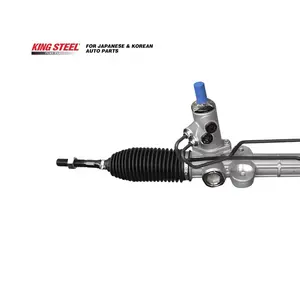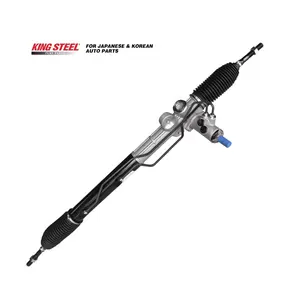(40849 products available)



















 Ready to Ship
Ready to Ship



































































































































Brazilian car batteries:
Brazilian car batteries are rechargeable power sources that supply energy to vehicles. They provide power for ignition, accessories, and starting the engine, and they come in different types. For instance, the Lead-Acid Batteries are the most commonly used batteries in Brazilian cars. They are affordable and reliable. Lithium-Ion Batteries, on the other hand, are mostly used in electric vehicles because they have a higher energy density compared to Lead-Acid Batteries. AGM Batteries are Maintenance-Free Batteries that are leak-proof and can be mounted in different positions. They are Ideal for Start-Stop Vehicles due to their high cycling capabilities. Gel Batteries employ a silica-based electrolyte that provides deep cycling capabilities and is less prone to sulfation.
Brazilian car tires:
Tires are the only point of contact between a car and the road. They provide traction, allow for steering, and enable braking. Brazilian car tires come in different types depending on the weather and road conditions. For instance, all-season tires are the most commonly used tires in Brazil because they are suitable for different weather conditions. On the other hand, summer tires are Ideal for hot temperatures and dry roads. They have a higher grip and shorter braking distances. Winter tires are mostly used in southern Brazil, where temperatures are low, and roads are icy.
Brazilian car suspension:
The suspension system is responsible for a car's smooth drive. It absorbs shocks and impacts from uneven roads. The suspension system comprises struts, shocks, springs, control arms, and bushings, which all come in different types. Coil spring suspension is the most commonly used type of suspension in Brazilian cars. The system uses a coil spring to absorb shocks. Leaf spring suspension consists of a spring made of several layers of leather springs placed one on top of the other in a circular form. Air spring suspension uses inflatable rubber bladders filled with compressed air.
Brazilian car engines:
Brazilian car engines come in different types depending on the fuel. Flex fuel engines are the most common car engine in Brazil. The engine is designed to use both ethanol and gasoline. Ethanol is cheaper and has a higher octane rating, which makes it a popular choice among Brazilian car owners. Gasoline is used when the car owner needs more power, such as when driving uphill. Diesel engines use diesel fuel, which provides better fuel efficiency compared to other fuel types. Petrol engines use gasoline as fuel. Compared to diesel engines, petrol engines have higher power and are common in small cars.
Vehicle compatibility
Brazilian car parts are made for numerous vehicles. It will be stated at the packaging or the part which vehicle the part is compatible with. The make, model, and year of the car should match to ensure the part will work right.
Quality standards
Quality control standards for Brazilian car parts are important. Look for certifications like ISO 9001, which proves a good quality system. Parts made to meet Original Equipment Manufacturer (OEM) standards are also high quality. OEM parts are made to be exactly like the part the car had when it was new.
Material
The materials a car part is made from can affect how well it works and how long it lasts. Common materials include steel, iron, aluminum, copper, and certain plastics. The packaging will tell what a part is made from. The materials should be appropriate for the function of the part.
Warranty
The warranty is a promise from the maker that the part should work correctly. It will say how long of a promise period there is. A longer warranty means the company has confidence the part will not have problems. The warranty also states what issues it covers.
Maintenance requirements
Some car parts need special care to keep them in good shape. The packaging will give maintenance tips. These could include things like using a certain type of oil or lubricant on moving parts or cleaning a part in a specific way.
Before buying Brazilian auto parts, it's important to research the market and understand the target customers' needs. Here are some factors to consider when choosing auto parts:
Brazilian vehicle parts can be very easy to install. Here is how to DIY and replace a few parts:
Replacing Brake Pads
Lift and secure the front or rear wheels of the vehicle and remove the wheels. After that, remove the brake caliper bolts and slide the caliper off the pads. The brake caliper should be hung using a bungee cord or rope. Old brake pads should be disposed of and replaced with new ones. The brake caliper should be slid back onto the rotor and secured using the caliper bolts. Lastly, the wheels should be fixed, and the vehicle should be lowered to the ground.
Replacing Spark Plugs
The spark plug wires or ignition coils should be removed gently. After that, use a spark plug socket and ratchet to remove the old spark plugs. The new spark plugs should be tightened using a torque wrench to ensure they are installed tightly. Lastly, the spark plug wires or ignition coils should be reconnected.
Replacing Air Filter
The air filter housing should be located, and the clips or screws holding it in place should be removed. After that, the old air filter should be taken out of the housing and replaced with a new one. Finally, the air filter housing should be reassembled by securing the screws or clips that were removed earlier.
Replacing Oil Filter
The old oil filter should be located and removed by turning it counterclockwise. After that, a new oil filter should be installed by applying a thin layer of oil to its gasket and turning it clockwise until snug. Lastly, the vehicle's oil should be changed by pouring the new oil through the oil filler.
Replacing a Battery
The battery terminals should be disconnected, starting with the negative terminal and then the positive terminal disconnecting. After that, the battery tray should be cleaned, and a new battery should be installed, ensuring it is properly secured. Finally, the battery terminals should be reconnected, starting with the positive terminal and then the negative terminal.
Q1: Are foreign auto parts compatible with Brazilian vehicles?
A1: In many cases, foreign auto parts are designed to be compatible with Brazilian vehicles. Nevertheless, it is necessary to verify the compatibility requirements and, if necessary, make adjustments or use adapters.
Q2: How can I ensure the quality of Brazilian auto parts?
A2: To ensure the quality of Brazilian auto parts, it is important to purchase them from reliable suppliers, check quality certifications, read reviews from other customers, and, if possible, test the parts before buying in large quantities.
Q3: What is the warranty period for Brazilian auto parts?
A3: The warranty period for Brazilian auto parts can vary depending on the supplier and the manufacturer. Generally, the warranty period ranges from six months to two years, but it is important to read the terms and conditions of the warranty.
Q4: How to find reliable suppliers of auto parts in Brazil?
A4: To find reliable suppliers of auto parts in Brazil, it is recommended to research online, read reviews from other customers, ask for recommendations from business partners, and participate in trade fairs and exhibitions related to the automotive sector.